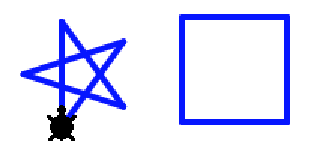Microworlds, Powerful Ideas, and what do we do Monday?
A workshop led by Michael Tempel and Michelle Hughes
When: |
Saturday, February 11, 2023, 10:00 am to noon EST |
Where: |
Everywhere via Zoom |
| |
The subtitle of Seymour Papert’s 1980 book Mindstorms is
“Children, Computers, and Powerful Ideas.” Chapter 5 is
“Microworlds: Incubators for Knowledge.” We pretty much know
what children and computers are. But what are Powerful Ideas,
and what are Microworlds?
A Microwold is a streamlined environment constructed to support
learning in a particular domain. The Turtle World and a set of
kindergarten blocks are two examples.
The term “Powerful Idea” has not been so well defined. Rather
than start by trying to arrive at a definition, we’ll take an “I
know one when I see one” approach and build from there. We’ll
start by accumulating a list of what we think are powerful ideas
and then build from there. This method of arriving at a general
definition by looking at specific cases is, in itself, a
Powerful Idea.
We’ll look at Turtle Geometry and other Microworlds discussed in
Mindstorms, and the powerful ideas they can make
accessible. We’ll discuss the constructing of Microworlds
and exploring Powerful Ideas as a way to organize teaching and
learning in a practical way.
The Powerful Idea focus allows relating one area of learning to
other situations and domains. Making these connections rests on
a fundamental Powerful Idea of learning something new by
connecting with something you already know. A few examples:
|
A popular robotics activity is having a bot follow a line. The underlying powerful idea is how feedback works. Knowing about feedback can help with understanding thermostats, how to revise an essay, climate change, and much more. |
 |
|
A project on birds included recordings of bird calls and accessing them in a Scratch project with a Makey Makey. The underlying Big Idea is about communication. |
 |
|
In Turtle World the Total Turtle Trip Theorem states that when the turtle draws a closed shape, returning to its initial state – its position and heading – it has turned 360° (or a multiple of 360°) regardless of how long or complicated the trip was. This powerful idea is built on the concept of “state,” which also helps with creating Scratch animations that always start in the same way when run multiple times. |
 |
In this workshop we’ll look at these and other Powerful Ideas and Microworlds that carry them. The focus will be on how these Microworlds and Powerful Ideas are situated in classroom activities and projects. This includes how we design the learning environments and how we talk with students about what happens in them.
About the workshop leaders:
Michelle Hughes has been a teacher and teacher leader in a variety of educational settings for more than thirty years. A graduate of Bank Street College of Education in Elementary and Museum Education, she began her career in Museums, but soon fell in love with the classroom. Michelle joined the public school teaching corps, where progressive-constructivist practices formed the foundation of her teaching. For twelve years she co-taught in a collaborative inclusive learning environment. In her twelfth year of teaching she was recruited to found a middle school program in an independent school, High Meadow School in Stone Ridge, where she eventually became Head Of School for ten years. Michelle became interested in the different ways boys and girls learn, and took the opportunity to join The Albany Academies where she was director of lower and middle schools for the past five years. She is now launching LARC an education coaching and professional development consultancy.
Michael Tempel is president of the Logo Foundation. You can find out more about him here.| |